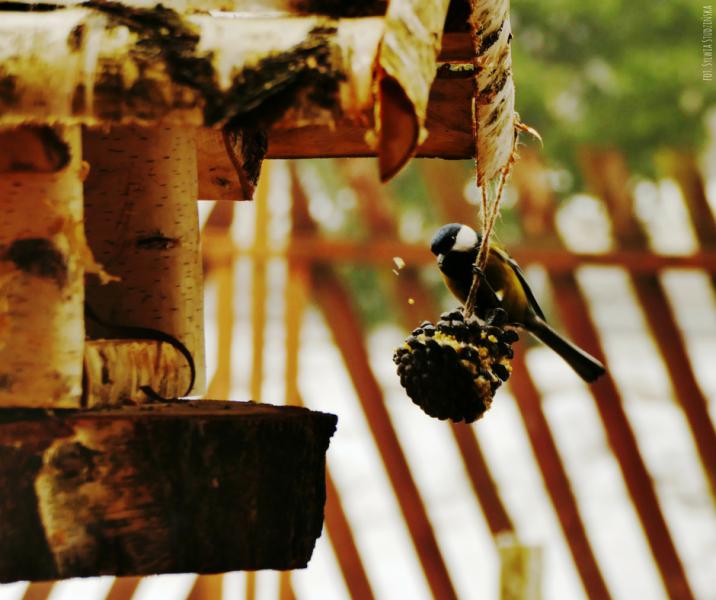 Asset Publisher
Asset Publisher
Polish forests
Poland is in the European lead, while concerning the area of all forests. They cover about 29,2 % of the country territory, and grow within the area of 9,1 million hectares. The overwhelming majority of the forests is state owned, of which almost 7,6 million hectares are managed by the State Forests National Forest Holding..
The number of Polish forest is still growing. The forestation rate of the country has increased from 21 % in 1945 to 29,2 % at the moment. Between 1995 and 2008, the forest area increased by 310 thousand ha. The basis for afforestation works is the "National Programme for Increasing the Forest Cover" (KPZL), assuming an increase of the forestation rate up to 30 % by 2020 and up to 33 % by 2050. Polish forests abound in flora, fauna and fungi. 65 % of the total number of animal species live there.
The forests grow in our country on poor soils, mainly because of the development of the agriculture in previous years. It influences the distribution of the types of the forest sites in Poland. Over 55 % of the forest areas is covered with coniferous forests. In other areas, there are forest sites, mainly the mixed ones. Their small part constitute alder and riparian forests – not more than 3 %.
In the years 1945 – 2011 the area of natural deciduous tree stands within the area of the State Forests National Forest Holding increased from 13 to 28,2 %.
Within the lowlands and uplands the most often occurring tee species is pine. It covers 64,3 % of the forest area of the State Forests National Forest Holding and 57,7 % of private and commune forests. In the mountains the predominant species is European spruce ( in the west) and European spruce with beech (in the east). Domination of pine is the result of carrying on sustainable forest management in the past. Once, the monocultures (crops or cultivations of one species) were the answer to the great demand of industry for wood. Such forests appeared to be quite fragile to climatic factors. They also were often the prey of pests' expansion.
In Polish forests, the share of other tree species, especially deciduous trees have been systematically increasing. The foresters have stepped aside from monocultures – that is why, they try to fit specific species of the forest stand to the natural stand, that would be proper for the given area. Thanks to that, in the years 1945 – 2011, the area of the deciduous tree stands within the lands of the State Forests National Forest Holding increased from 13 to 28,2 %. There occur more and more frequently the following tree species: oaks, ashes, maples, sycamore maples, elms, but also birches, beeches, alders, poplars, hornbeams, aspens, tilias and willows.
Our forests are the most often represented by the forest stands aged 40 to 80 years. The average age of the forest equals 60 years. More and more trees are of big size at the age over 80 years. Since the end of the Second World War, the forests' area has increased up to almost 1,85 million hectares.
Raport o stanie lasów w Polsce 2012
 Asset Publisher
Asset Publisher
Jak dobrze przygotować się do sezonu dokarmiania ptaków?
Jak dobrze przygotować się do sezonu dokarmiania ptaków?
Zima to czas, w którym ptaki wymagają szczególnej troski i pomocy ze strony człowieka. Trzeba jednak pamiętać, żeby przed rozpoczęciem dokarmiania przemyśleć kilka istotnych spraw.
Dokarmiając ptaki zimą koniecznie trzeba robić to regularnie i wykładać karmę w tych samych miejscach całą zimę. Ptaki szybko przyzwyczają się do źródła pokarmu i zaprzestanie dokarmiania może stać się dla nich tragiczne w skutkach.
Ważną rzeczą jest regularne czyszczenie karmników z pozostałości ziarna i odchodów. Jeśli wiesz, że nie znajdziesz na to czasu – polecamy wywieszanie ptasich pyz. Są wygodniejsze w „obsłudze” :)
Dobrze jest zadbać o właściwą konstrukcję karmników. Pożywienie wykładane ptakom, nie powinno być z niego wydmuchiwane przez wiatr oraz w żadnym wypadku nie powinno zamoknąć. Karmniki powinny także zapewniać możliwość łatwego lądowania i ucieczki w przypadku zagrożenia.
Bardzo ważną sprawą jest lokalizacja karmnika. Najlepsze miejsce to takie, do którego nie dostaną się nieproszeni goście oraz takie, do którego my jako dokarmiający, nie będziemy musieli przemierzać dużej odległości – chyba, że ktoś lubi :)
Kaczki, kurki wodne i łabędzie, czyli ptaki wodne, chętnie będą jadły ziarna zbóż, drobno krojone warzywa oraz kukurydzę, trzeba przy tym pamiętać, że powinny być dokarmianie w czasie, gdy zamarza większość zbiorników wodnych.
Sikory, kosy kwiczoły, wróble, dzwońce, trznadle i dzięcioły chętnie zjedzą surową, ale niesoloną słoninę, łuskane orzechy, ziarna słonecznika, mrożone porzeczki, aronię, owoce dzikiego bzu, suszone, drobne rodzynki, płatki owsiane czy proso.
Dobrym sposobem jest zatopienie ziaren w niesolonym łoju lub smalcu. Jeśli wywieszacie słoninę, pamiętajcie, że nie może wisieć dłużej niż dwa tygodnie. Nawet jeśli ptaki jej nie zjedzą trzeba ją wyrzucić, gdyż po tym czasie jest już zjełczała.
Ważna sprawa – należy pamiętać, aby absolutnie nie karmić ptaków produktami z solą, np. boczkiem, solonymi orzeszkami czy słonecznikiem, gdyż zimą ptaki mają utrudniony dostęp do wody pitnej.
Kolejna bardzo ważna sprawa – ptaków nie należy dokarmiać pieczywem, gdyż może to prowadzić do chorób układu pokarmowego.
tekst: Teresa Wróbel


 fot. Paweł Fabijański
fot. Paweł Fabijański
 fot. Paweł Fabijański
fot. Paweł Fabijański
 fot. Paweł Fabijański
fot. Paweł Fabijański


